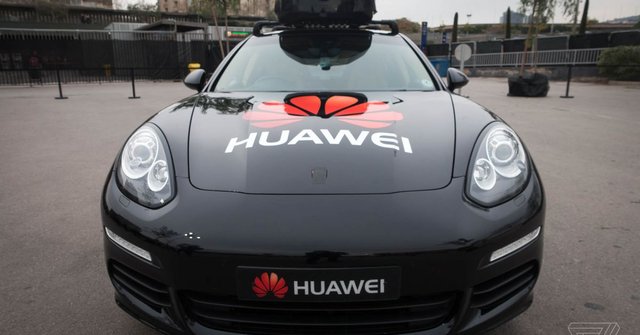A phone drove a Porsche, and I rode along
Huawei has spent a lot of time talking up the supposed AI capabilities of its latest in-house processor design, the Kirin 970. Found inside the company’s newest Mate 10 and Mate 10 Pro smartphones, as well as the Honor View 10, the Kirin 970 has a dedicated “neural processing unit” or NPU that’s designed specifically for AI-related tasks.
So far, however, there haven’t been that many use cases for the NPU, despite Huawei’s efforts to promote open AI development on its platform. Out of the box, you’ll only really notice the NPU at work in things like the camera app, which automatically detects subjects in the scene based on image recognition and adjusts settings accordingly. So this week at Mobile World Congress, Huawei wanted to put the Kirin 970 to the test in a more physical setting. What if the chip was capable of driving a car?
In a parking lot at FC Barcelona’s iconic Camp Nou stadium, Huawei is attempting just that — and the company says this is the first time a self-driving car has ever been powered by a smartphone. Sure enough, a Mate 10 Pro mounted on the dashboard of a Porsche Panamera — and hooked up to a skibox on the roof with a camera and a connection to the drivetrain — turned the car into a driverless vehicle capable of detecting and maneuvering around certain objects. To be clear, Huawei isn’t getting into autonomous driving; this was simply a stunt intended to show off what can be achieved with the Kirin 970.
The test drive was comprised of two parts: a slow, 5mph run where the car and phone detected and “learned” about three large cardboard obstacles, and a 30mph drive where the car had to avoid one of those obstacles in its path. After the first run, I told the car what to do upon detecting each obstacle — swerve left for the dog, swerve right for the giant soccer ball, brake hard for the guy with a bike — and someone from Huawei chose which obstacle to put in the car’s path for the second run.
They chose the soccer ball. I put the Porsche into drive, tapped “Drive” on the Mate 10 Pro, and the car accelerated itself towards the ball. Right in time, it swerved to the right, averting what might have been a nasty puncture at the very least.
The demo worked as planned, and was definitely impressive in some ways, but it’s hard to say what it really demonstrates about the Kirin 970 hardware. Huawei says that it shows off the NPU’s ability to interpret image data, match it to known objects, and train itself to identify objects that aren’t already in its recognition model. This is true, and it's cool that it's possible at all for a smartphone chip in a moving vehicle. But the demo itself had such a limited data set — three large, wildly different obstacles — that I can’t really tell whether the NPU is getting much of a workout.
Related A brief guide to mobile AI chips
I should also note that our first test drive didn’t work because the USB-C cable connecting the phone to the camera was faulty. This doesn’t really speak to the Kirin 970’s AI capabilities, of course, I just thought it was worth noting that even hyper-powerful processors run into the same sort of USB-C issues as us mere humans.
Still, at this early stage of autonomous driving, it’s not for nothing that Huawei was able to put together an image recognition program in under five weeks, run it on a phone, allow it to take control of a Porsche, and be confident enough that it wouldn’t kill any journalists. This still isn’t a great reason to buy a Mate 10 Pro, but it’s the kind of thing that could get you thinking about what will be possible in the future.